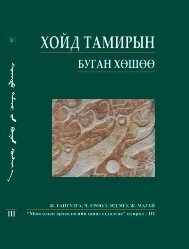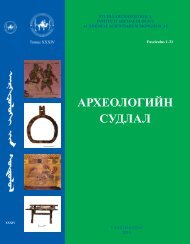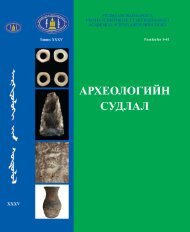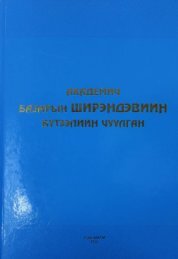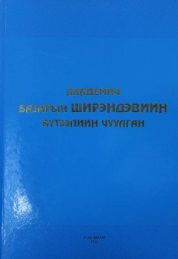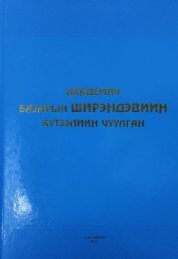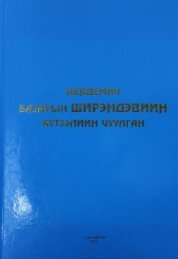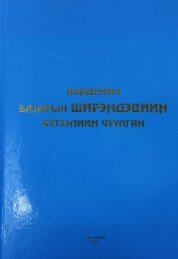2
Create successful ePaper yourself
Turn your PDF publications into a flip-book with our unique Google optimized e-Paper software.
IV<br />
The chief aim of the People’s Revolution of 1921 was winning political<br />
power. It was reflected and determined in the programme document of the<br />
revolutionary circles, adopted in 1920 and called, The Party members oath in an<br />
article published in the revolutionary newspaper ‘Mongolyn Unen’ of December<br />
20 th 1920; in the principal document of the I Congress of the Mongolian People’s<br />
Party, adopted in March , 1921 under the title ‘The ten point task’ and finally in<br />
the formation of a Provisional People’s Government on March 13 th , 1921.<br />
These ideas were realized with the establishment of a People’s Government<br />
in July 1921, the democratization of the state structure during 1921-1924; the<br />
proclamation of a Mongolian People’s Republic in November, 1924; the further<br />
strengthening of the popular democratic system on the basis of wide participation<br />
of the representatives of the arats and workers, and finally with the creation of a<br />
People’s Democratic State of workers cooperative arats and working intellectuals.<br />
I would like to mention in this connection that of the deputies of the Great<br />
People’s Khural of IV convocation (1969), 23,2% are workers, and 28,2% members<br />
of agricultural production associations. A great number of representatives of<br />
workers, cooperative arats intellectuals take an active part in aimak, town and<br />
somon khurals and permanent committees. The popular Government itself, in the<br />
form of Khurals, has continuously perfected itself as the governing structure of a<br />
people’s democracy.<br />
People’s Democracy in Mongolia has traversed two stages-democratic 1921-<br />
1940, and socialist-beginning with 19406 The above mentioned stages have<br />
their own periods, which differ from each other according to specific decision<br />
on the form and content of socio-economic problems. People’s government in<br />
Mongolia is one of the variants of a new, socialist state. The essence of a People’s<br />
democracy as of any other type of state is that it is governed by general laws of<br />
development. Feudal monarchies with cognate characteristics, or the forms of<br />
bourgeois republic familiar to us parliamentarian or presidential with parallel<br />
characteristics, which appeared with the establishment of a bourgeois system<br />
in the majority of European countries and America, can hardly be explained as<br />
purely mechanical repetition, mere copying of forms of power , of the forcing<br />
forms of power by one state upon another. Such an approach to a complex<br />
historical phenomenon would fail to reveal the essence of historic reality. The<br />
crux of the matter lies not in copying, but in expressing the essence of this of that<br />
economic formation, which is based on the production of material benefits, on<br />
development of productive forces and production relations.<br />
Thus after many centuries in Mongolian statehood was revived. But it was<br />
resurrected and is developing under totally different historical conditions and on<br />
quite new principles. Since the first days of its inception, the People’s State began<br />
to conduct a policy of peace and friendship towards other countries.<br />
For the first time quite new intergovernmental relations were established<br />
390




